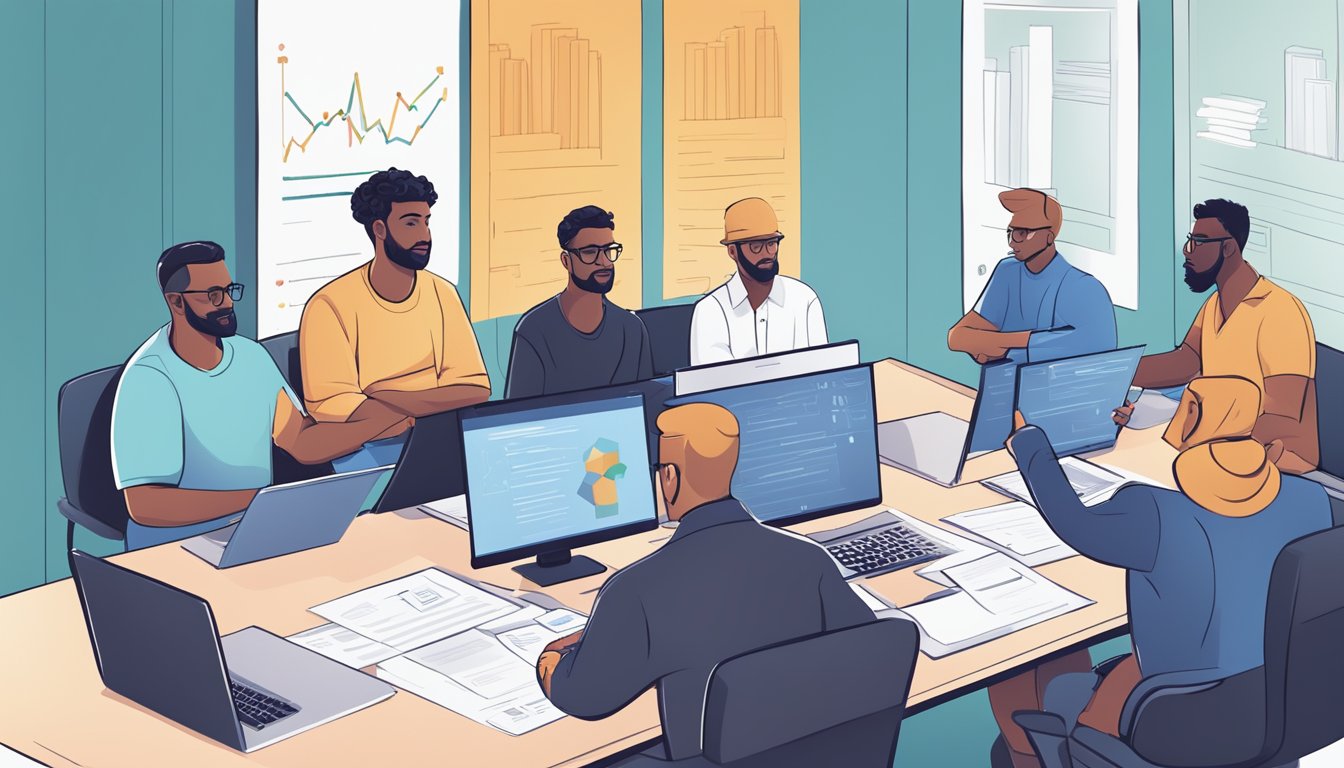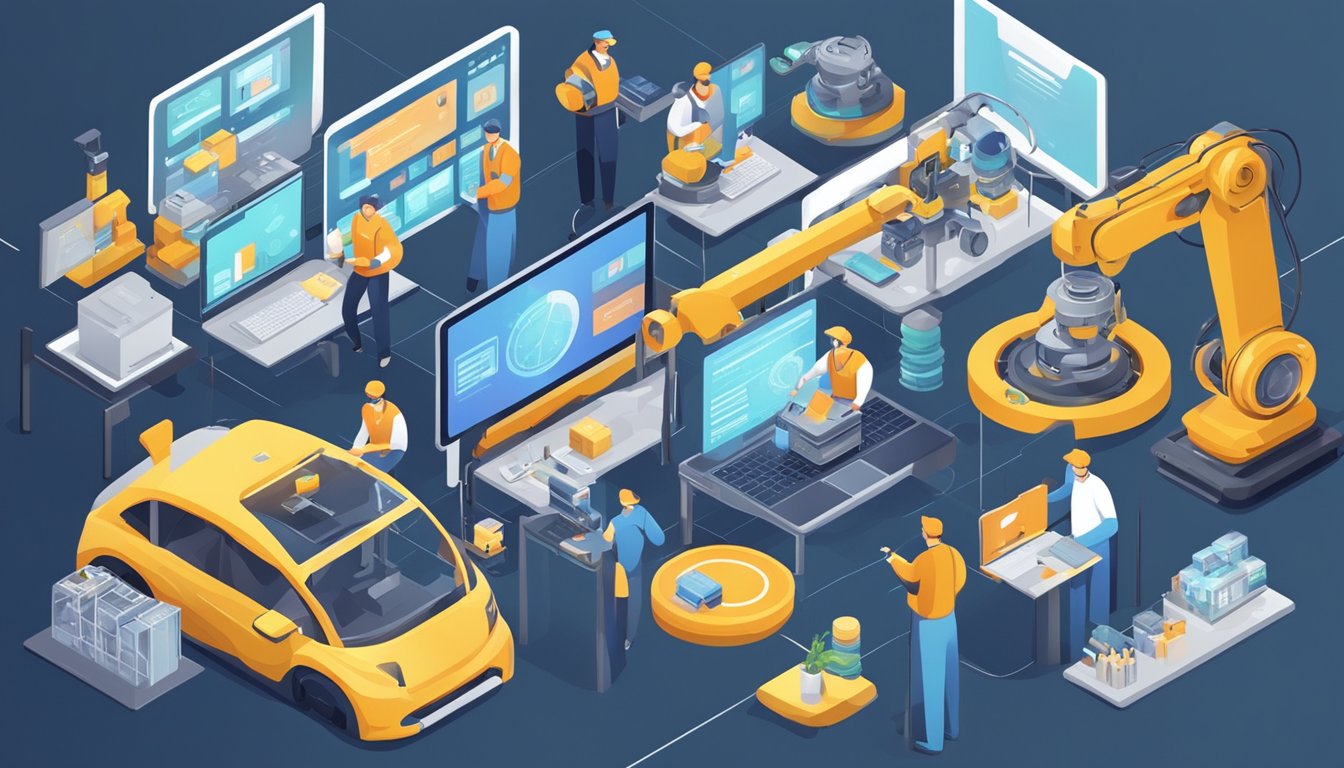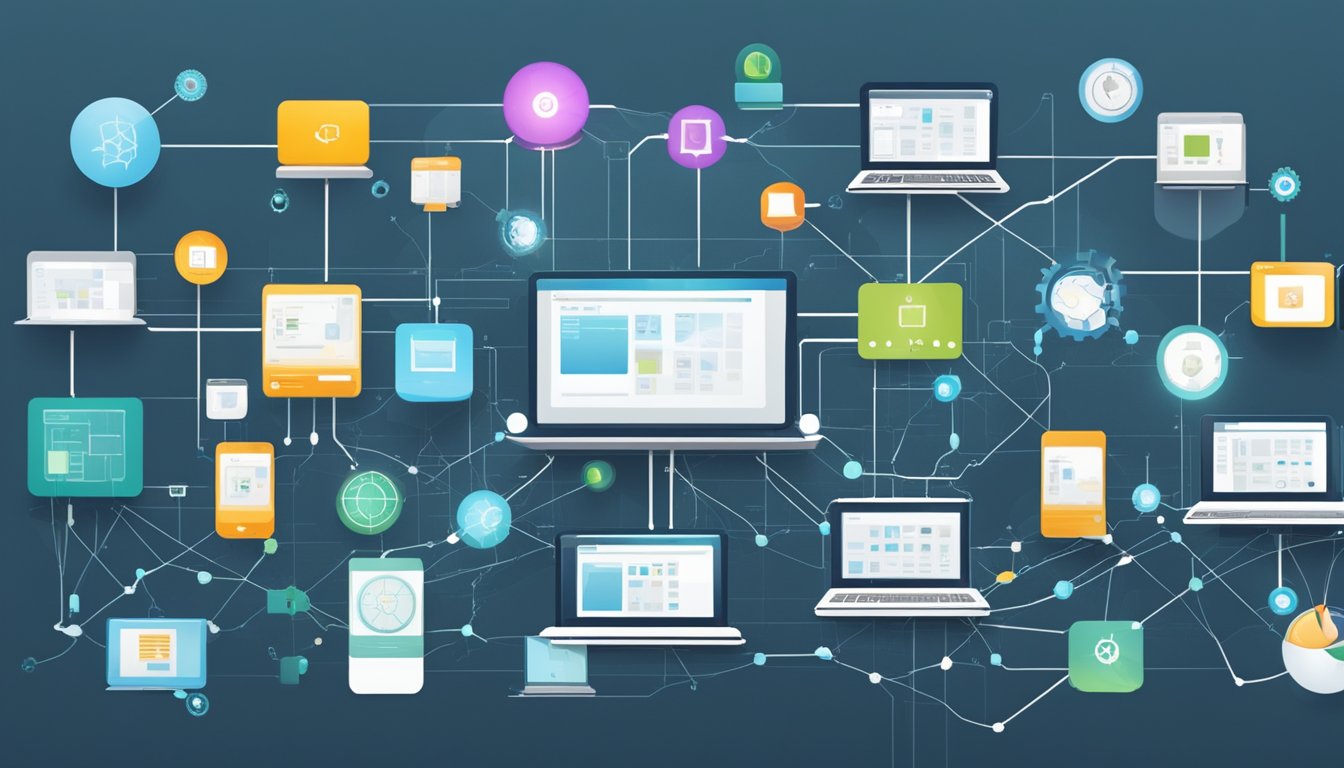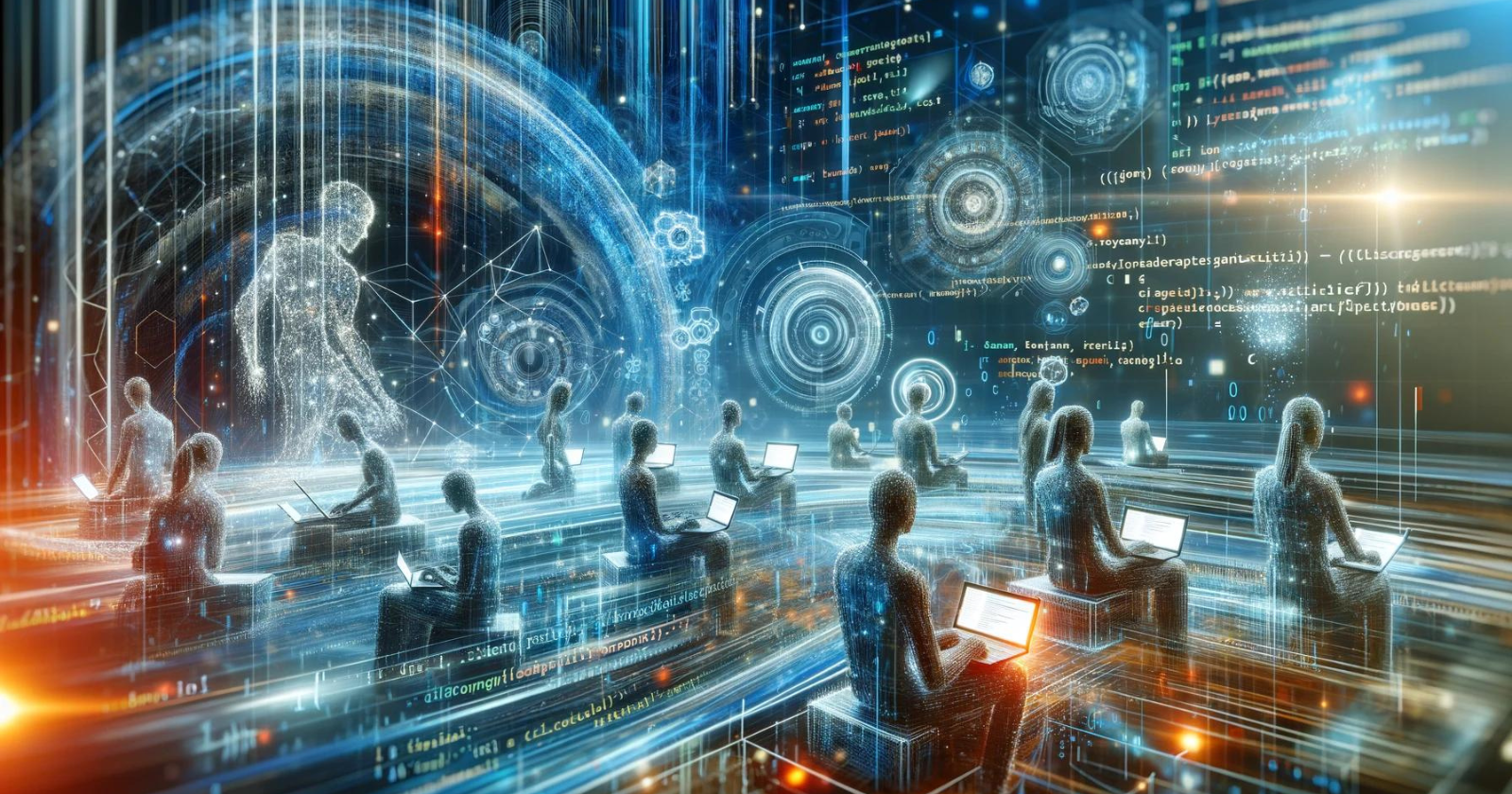The Role of Developers in AI Automation: Shaping the Future Through Code and Creativity
Have you ever wondered how the world of artificial intelligence (AI) keeps evolving? Well, a big part of that growth comes down to the developers steering the ship. And if you think coding is just about tapping away at a keyboard, guess again! AI developers are the real MVPs, creating and refining algorithms that enable machines to learn and make decisions. It’s like teaching a toddler to walk, but in this case, the toddler can end up learning chess instead of just stumbling around.

But what does AI automation actually entail? Imagine having a helper that not only follows your instructions but learns to anticipate your needs and acts accordingly. That’s what machine learning brings to the table—it’s a crucial slice of the AI pie. Developers in this space have a knack for blending creative problem-solving with programming prowess. They’re not just behind the scenes; they’re in the thick of it, ensuring that automated systems are smart enough to handle tasks without needing us to hold their hand every step of the way.
The impact? Enormous! Developers in AI and automation are not only revolutionizing industries but they’re also reshaping the role of software development itself. By leveraging AI, mundane tasks can be automated, freeing up developers to focus on more complex and innovative projects. It’s a win-win: the machines get smarter, and we get to push the boundaries of what technology can do. No matter how you slice it, developers are the critical cogs in the ever-turning wheel of AI automation.
Understanding AI and Automation

In a world where technology rapidly evolves, it’s pivotal that you grasp the concepts of Artificial Intelligence (AI) and automation, especially in the realm of software development. Aren’t you curious about how these technologies affect what you do?
Defining AI and Machine Learning
At its core, AI represents the vast universe of systems or machines that mimic human intelligence to perform tasks and can iteratively improve themselves based on the information they collect. What does this mean for you? Well, think of AI as the brainy computer friend that learns from its experiences. Machine learning (ML), a subset of AI, involves algorithms and statistical models that enable machines to improve at tasks with experience. ML algorithms are often categorized as supervised, unsupervised, or reinforcement learning, each with its unique way of learning from data.
Automation in Software Development
When you hear automation tossed around in conversations about software development, it signifies the application of technology to perform tasks with minimal human assistance. Automation can apply to not only routine jobs but also complex programming tasks. This is where AI tools and frameworks come into play, helping to streamline development workflows, manage version control, or even write and test code—yes, that’s right, machines writing code!
The Evolution of AI Technologies
From its early inception to the advanced state it is in today, the trajectory of AI technologies has been nothing short of impressive. Pioneering AI models have paved the way for generative AI, where machines now generate text, images, or music that can be surprisingly human-like. The growth of machine learning algorithms has been exponential, significantly impacting fields such as natural language processing and predictive analytics. These advancements aren’t just cool tech buzzwords but real tools at your fingertips, ready to change the way you build and innovate.
Remember, as you navigate through the waves of AI and automation in software development, it’s the thoughtful implementation of these technologies that will set you apart. You’re not just coding; you’re crafting the future. How’s that for a Tuesday?
Role of Developers in AI-Powered Automation
In the fast-paced world of tech, you’re the key player bringing AI to life in automation. Your code doesn’t just live in a vacuum; it propels businesses into the future.
Integrating AI into Development Workflows
You’ve probably noticed how AI can give productivity a serious boost, right? When you integrate AI into development workflows, you’re taking DevOps to a whole new level. Imagine automating mundane coding tasks or identifying bugs with machine precision—that’s what’s on the horizon for your workflows!
- Coding enhancements with AI tools
- Automated bug detection and fixes
- Efficient pipeline management
Here’s a sneak peek into how these two worlds blend: Automation has revolutionized IT processes.
AI Developer as a Role
So, who brings these smart systems to life? Why, that’s you, the AI developer! You’re no longer just coding; you’re teaching machines to learn, shaping the future of technology. What’s cooler than creating tech that can think and evolve?
- Designing AI algorithms
- Collaborating with data scientists and engineers
- Focusing on solutions that adapt and learn
Think of yourself as the puppeteer of code. Want to know more about your role? Check out The Roles and Responsibilities of AI Developers.
Building AI Models
When it comes to building AI models, you’re like a chef mixing just the right ingredients for that perfect dish. Your code stirs together data, algorithms, and machine learning to cook up some truly intelligent systems.
- Selecting datasets and features
- Training and testing models
- Iterating for optimized performance
Is your curiosity piqued on how to craft these smart systems? Dive into specifics with The Impact of AI & Automation on Developers.
Maintaining and Monitoring AI Systems
After deployment, your job isn’t done. Monitoring and maintaining AI systems is crucial; they need to stay sharp and accurate. Spot any hiccups? You’re on it, ensuring seamless performance and adapting to new data.
- Real-time performance tracking
- Adjusting and retraining models as needed
- Ensuring dependable automation
Curious about what’s beyond the horizon? Learn how to stay on top of AI trends with insights from AI, automation, and the future of work.
The Impact of AI on Developer Productivity
In the fast-paced world of software development, AI tools are reshaping how you code, test, and maintain quality. Let’s explore the ways AI is boosting developer productivity.
Enhancing Coding Efficiency with AI
Have you ever imagined a virtual coding assistant? Enter AI pair programmers like GitHub Copilot, which suggest code and functions based on context. By understanding various programming languages, these tools can help streamline the coding process, making it faster and more efficient for you. This isn’t just about speed; it’s about supporting you to produce cleaner and more maintainable code.
Automation of Repetitive Tasks
Think of the most tedious tasks you deal with daily. Now picture them automated. AI excels at handling repetitive tasks, freeing you up for more creative problem-solving. From automating processes like coding standard checks to generating boilerplate code, AI tools ensure that you can focus on the parts of your job that you love—not the monotonous parts that feel like a slog.
Quality Control through AI
Getting code right often means hours spent on testing and quality control. But what if AI could flag potential errors before they become issues? Tools powered by AI can analyze code to predict and prevent defects, ensuring code quality is maintained. Plus, automated tests designed via AI can adapt to changes in the codebase, ensuring your product remains robust through countless iterations.
Incorporating AI into your development workflow doesn’t just save you time—it enhances the very nature of software creation, pushing you, and the tech community, towards a future where human ingenuity and machine efficiency come together to produce remarkable outcomes. Isn’t it exciting to be part of this transformation?
Ethical and Legal Considerations

In the fast-paced world of AI automation, you, the developers, play a pivotal role in ensuring the technology you create respects data privacy and adheres to evolving legal standards. Remember, with great power comes great responsibility—especially when dealing with sensitive data and the potential implications of AI in day-to-day life.
Data Privacy and Security
Are you protecting the data you handle? It’s crucial to understand that data privacy isn’t just a buzzword—it’s a legal requirement and an ethical imperative. As you develop AI systems, consider the implications of data breaches and the resulting loss of trust. Make use of encryption, access controls, and regular audits to mitigate potential vulnerabilities.
- Encrypt sensitive data, making it unintelligible to unauthorized users.
- Control access carefully, ensuring only those who need to see the data can.
- Conduct audits regularly to catch any security gaps.
Moreover, integrating AI can lead to ethical dilemmas. Imagine inadvertently creating biases in your AI’s decision-making process. That’s not just a bad look—it could lead to significant consequences for individuals who are subject to the AI’s outputs.
Navigating Legal Standards
When it comes to the law, staying up-to-date with legal obligations related to finance, AI, and security regulations is non-negotiable. Have you considered the legal repercussions of your automated systems? As nations around the world strengthen regulations, make sure your AI isn’t inadvertently breaking the law.
- Research and comply with laws like the GDPR in Europe that dictate strict guidelines for data handling.
- Stay informed about the legal landscape of AI in sectors like finance, which could influence your work.
- Consult legal experts to ensure your AI systems are within legal parameters.
In a nutshell, acknowledging the significance of data privacy and the necessity to comply with legal standards isn’t just about following rules—it’s about pioneering the AI landscape with integrity and reliability. Keep these points in mind, and you’ll be paving the way for responsible AI development.
AI Automation in Different Domains

You’re navigating through an era where AI automation is no longer a futuristic concept; it’s here enhancing efficiency across various sectors! Let’s zero in on how AI is innovating in healthcare, finance and legal, and IT and security. Each domain leverages artificial intelligence (AI), predictive analytics, and advanced algorithms to streamline data processing, improve decision-making, and revolutionize problem-solving.
AI in Healthcare
Imagine a world where diagnosing a disease is precise, quick, and much less invasive. This isn’t just a pipe dream—AI in healthcare is making it a reality. AI algorithms are critical in processing vast amounts of patient data, leading to improved diagnostic accuracy. For example, AI-driven tools can analyze medical imaging with exceptional precision, aiding in early detection of conditions. These advancements are made possible by leaps in data collection and processing, not to mention the tireless problem-solving of developers!
- Predictive Analytics: Use of AI to predict patient outcomes and tailor treatments.
- Data Handling: AI’s ability to manage and analyze large datasets for patient care.
AI in Finance and Legal
When it comes to your money, accuracy and security are key, right? AI’s got you covered. In finance, AI automation performs real-time data analysis for risk management and investment decisions. Now that’s smart banking! And AI doesn’t stop at numbers; it’s making strides in the legal sphere as well. Automated systems are being developed to sift through case law and legal documents, helping experts make informed decisions without the drudgery of manual research.
- Fraud Detection: AI algorithms identifying unusual patterns to flag fraud.
- Contract Analysis: AI tools automatically analyzing legal documents for key terms.
AI in IT and Security
We’ve all heard about those pesky hackers, but AI in IT and security is like your digital superhero, combating cyber threats and vulnerabilities with its ultra-smart algorithms. By employing AI, we’re looking at a future of predictive cybersecurity, where systems can anticipate attacks before they happen. AI is constantly learning and adapting, making it an invaluable ally in safeguarding your digital universe.
- Threat Assessment: AI-driven systems proactively detecting potential security breaches.
- Automated Problem-Solving: AI tools streamlining IT operations by resolving common technical issues.
AI’s role in automation is undeniable, and developers are at the helm, steering these advancements to new horizons. So, are you ready for the ride?
Technological Integration And Deployment

When you think about the life cycle of software development, remember that the beauty of modern development lies in the efficiency of integrating new technologies and the swiftness of getting them deployed. This process isn’t just about slapping together bits of code; it’s much like a well-orchestrated dance where each step is crucial for the show to go on.
Continuous Integration and Delivery
Can you imagine integrating new features without causing a disaster? That’s where Continuous Integration (CI) shines. By frequently merging code changes into a central repository, you’re avoiding the “it works on my machine” syndrome. On the flip side, Continuous Delivery (CD) ensures that the code is deployable at any given moment—a real treat for any deployment aficionado. Together, CI/CD form a dynamic duo, making sure that your software is always dressed to impress and ready to hit the market.
-
CI Benefits:
- Prevents code conflicts
- Shortens feedback loops for developers
-
CD Boons:
- Smoother and faster deployments
- Higher release rates
AI in Real-Time Systems
Ever needed something to be fast and smart? That’s exactly what AI brings to real-time systems. Whether it’s for instant fraud detection, dynamic price adjustments, or any other on-the-fly decision-making, having AI in the driver’s seat means you get to enjoy a system that’s not only quick on its toes but also sharper than a samurai’s blade.
- Real-Time System Enhancements:
- Instantaneous data processing
- Adaptive and intelligent responses
Performance Tuning in AI Systems
Now, don’t get me wrong—AI is cool, but it’s not a “set it and forget it” kind of deal. Performance tuning in AI systems is akin to tuning a vintage car; you need to tweak things until it hums beautifully. By continuously optimizing algorithms and resources, your AI system runs smoother, faster, and becomes more cost-effective than ever.
- Tuning Tips:
- Regularly fine-tune algorithms
- Monitor and adjust resource utilization
Remember, with great power comes a need for equally great responsibility—or in our case, a need for robust technological integration and deployment strategies.
Advancing Developer Skills for AI Automation
Navigating the world of AI automation might seem daunting at first, but for you, the savvy IT professional, it’s an exciting opportunity to upskill and stay ahead. Think of it as expanding your creative toolkit, not just with new paintbrushes but with entirely new colors—and you’re the artist. Let’s jump right in and explore how you can enhance your developer prowess in this ever-evolving landscape.
Learning AI and Machine Learning Algorithms
First things first, wrapping your head around AI and machine learning algorithms is like learning the secret sauce to modern tech recipes. These algorithms are the building blocks of AI automation, powering everything from predictive text to complex data analysis—pretty cool, right?
- Focus areas:
- Neural Networks: Think of these like a mini-brain in your computer.
- Natural Language Processing (NLP): You’ve chatted with Siri or used ChatGPT, right? That’s NLP at work!
By mastering these, you’ll be setting yourself up for success in roles that tackle big data and smart technologies.
Embracing New Programming Languages
Do you speak Python? It’s not just a snake at the zoo—it’s also one of the most popular programming languages in the AI sphere. Broadening your language repertoire is a must, as many algorithms prefer Python’s readability and simplicity.
- Take note:
- Developers with a grasp of Python are hot property.
- Languages like R and Java are also valuable in your AI toolkit—diversity is key!
Learning these languages can be like picking up a new hobby; challenging at first, but oh-so-rewarding when you get it.
Creative Problem-Solving with AI
Last but not least, let’s talk about unleashing your inner creativity. Creative problem-solving with AI is where the magic happens. Agile methodologies encourage this by iterating fast and often, adapting to new challenges on-the-fly.
- Key strategies:
- Embrace the Agile mindset: Roll with the punches and adapt as you go.
- Innovative thinking: Look for out-of-the-box solutions to complex problems.
Remember, it’s not just about finding any solution—it’s about finding the best solution. And sometimes, that involves looking at problems from a totally new angle. Feeling ready to tackle the AI world head-on? These skills are your ticket to ride!
Optimizing Workflow Automation
When you’re in the thick of streamlining how work gets done, knowing the right tools and methods can make all the difference. Let’s dive into how you can optimize your workflow automation like a pro.
Workflow Automation Software
Are you tired of the manual grind? With workflow automation software, those repetitive tasks can become a thing of the past. Think of this software as the trusty sidekick to your development heroics—taking over the mundane so you can focus on innovation. Tools like these can support your project management efforts, auto-pilot simple tasks, and harness ML models to predict outcomes.
- Features to look for:
- Task automation & scheduling
- Real-time data analysis
- Integration capabilities
Most software provides intuitive dashboards that offer insights at a glance—how’s that for a productivity boost?
Debugging and Code Quality
Oh, the dreaded bugs! But fear not, because optimizing your workflow means integrating tools that help with debugging and maintaining code quality. Automated code reviews and suggestions can help catch issues early, saving you from future headaches. Automated testing frameworks, aren’t they a lifesaver?
- Best practices include:
- Continuous Integration/Continuous Deployment (CI/CD)
- Automated testing suites
- Static code analysis tools
Remember, crystal clear code equals happy developers (and even happier end-users).
Enhancing the Codebase with AI
Have you ever dreamed of a codebase that almost maintains itself? Incorporating AI is not just a dream—it’s rapidly becoming the go-to for savvy devs. AI-driven tools offer code suggestions that can refine and optimize the codebase, learning from patterns and past choices.
- AI enhancements can include:
- Predictive analytics for code performance
- Natural Language Processing (NLP)-enhanced documentation
- Automated refactoring recommendations
By using AI, your codebase doesn’t just grow—it evolves. Ready to watch your efficiency skyrocket?
Frequently Asked Questions
Navigating the world of AI and automation can be complex, but developers play a crucial role in shaping these technologies. Let’s tackle some burning questions around their responsibilities and the future of software development influenced by AI.
How do AI developers integrate artificial intelligence into existing business automation processes?
AI developers employ deep learning and other AI techniques to enhance existing business automation, making systems smarter and more efficient. By analyzing large data sets, they enable machines to recognize patterns and make decisions, improving business outcomes and decision-making, as highlighted by a resource on deep learning.
Can you outline what responsibilities developers hold when working with generative AI technologies?
Sure! Developers specializing in generative AI carry the responsibility to design and manage algorithms that can create content, from text to images. Their work involves feeding curated data into these models, ensuring the output is accurate and useful, as machine learning engineers do in the sphere of AI development.
In the field of AI automation, what distinguishes the contributions of AI developers from other tech professionals?
AI developers stand apart through their focus on creating self-running software that not only automates tasks but also adapts and learns. This is distinct from more routine automation that non-AI tech professionals might handle. AI developers are instrumental in enabling smarter automation and AI solutions.
How is the landscape of software development changing with the advent of AI-powered automation tools?
AI-powered automation tools are transforming software development by introducing capabilities for machines to learn and improve on their own. This revolutionizes the efficiency and effectiveness of developers, reducing the time spent on mundane tasks and allowing more focus on innovation and problem-solving.
What ethical considerations must developers keep in mind when creating AI automation solutions?
Developers must ensure their AI automation respects user privacy, avoids bias, and maintains transparency. Ethical development means creating solutions that are fair, accountable, and that safeguard users’ data, reflecting the growing concern for ethical AI and automation.
Could you highlight some examples or case studies where developers successfully implemented AI automation?
Certainly! There are myriad success stories showcasing AI developers’ achievements. From enhancing customer service with chatbots to optimizing supply chain logistics, AI automation is making waves across industries. A good place to learn about these advancements is by examining the innovations in AI software development.








